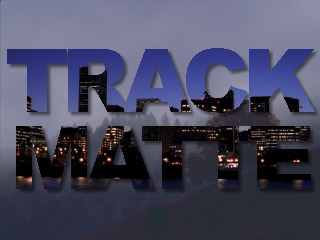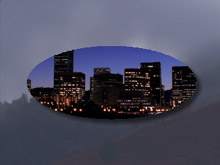Jim Krause | Classes | P354/J560 Program Graphics & Animation
Lab 9
Agenda:
- Midterm Projects
- After Effects Potpourri (glints, effects, etc.)
- Review Masks and Track Mattes
- Track Matte / Glint Exercise
Notes - It's fine to use supplied and found elements for in-class assignments, but all homework projects require ORIGINAL work. Please do not use other people's intellectual property or marketing materials. Your design should be the most noticeable element.
Please check your work (movie files and critiques) before uploading. Some have turned in movies with issues.
Midterm Projects
- Please upload a copy of your project into the Midterm Project Canvas assignment along with your critique.
Critiquing/Reviewing Midterm Projects
We will review these in class. Everyone will provide feedback and the class will serve as a focus group of sorts.
Start a new document in Textedit or Word called your username (mine would be jarkraus)
- Note the name of each person as we review projects.
- Write down at least 2 things or attributes that are working well (Excellent use of contrast, strong layout, etc.)
- Write down at least 2 things that could be improved (text too small, unclear message, etc.)
- When you are finished, place your document in the folder called "Peer Critiques".
After Effects - Potpourri
Interpret Footage
When importing interlaced video, After Effects usually guesses the field order correctly, but occasionally gets it wrong. If your video is stuttering or showing interlacing lines, try checking the field order, which is specified in the interpret footage window. To get to the interpret footage window, right click on the footage in the project window and choose Interpret footage > Main.
In this area you can set parameters such as if the type of alpha channel, the frame rate, the field order, and the number of loops. If the video is stuttering or not playing smoothly, try changing the field order (upper or lower). Whether you should use upper or lower field first is determined by the particular hardware of the video editing system. One thing to remember is that most HD video is upper field first. DV and most legacy firewire-captured video is lower field first.
Once useful parameter in this area is the loop __ times function. If you want a movie to loop, simply bump the number from 1 up to something higher.
Making Animated Glints
- The layer to be glinted should not be 100% bright, or you won't be able to see the "light" reflecting off of it.
- To make a glint, start off by making a tall, bright, light solid in your comp.Make it the color of the "light" you want to "reflect".
- Use a mask to feather the edges
- Turn it diagonally a little
- Place the glint layer directly over the layer to be glinted
- Turn on the preserve transparency (T) checkbox of the glint layer
- Use position keyframes to move the glint solid across the layer you'd like to glint
- You will likely need to precompose the glint with the layer you are glinting.
Track Mattes
What is a matte? A matte is a layer or a channel that defines the transparency of that layer or another layer. (Like an alpha channel in Photoshop) Some like to think of it as a cookie cutter.
Track mattes need two layers to work. One layer acts as a matte or cookie cutter, the other layer provides the filling.
 |
 |
Track mattes can be
used to insert an image into a defined shape. For example you can
insert moving video into some text or the shape of an oval. |
|
To use Track Mattes, follow these three simple rules:
- Make sure you see your modes in the timeline columns.
- If you can't see the "mode - track matte" panel, then right click the top menu bar in the timeline. You will get a pop-up window. Select Columns -> Modes and your mode - track matte panel should appear in the timeline window. Alternatively, you can click on the arrow in the top, right-hand corner of the timeline to get the same thing.
- Place the matte layer (cookie cutter) directly above the layer that will serve as the fill.
- On the fill layer, set the track matte popup menu to use either alpha
or luma of the matte layer.
- Note that "inverted" is an option. Use this if you want to reverse the fill (fill outside the cookie cutter rather than inide it). Note that the matte (cookie cutter) layer will automatically have its visibility turned off.
Animated Track Matte , Glint, & Audio Exercise:
In this exercise you'll make an animated track matte, create a glint, and incorporate audio, like in this example.
- Make a new comp sized to fit your video clips (D1 4 x 3 or HD 16x9) 15 seconds long called trackmatte
- Import two movies (You can use your own or the clips from AV zip or AV2 zip.)
- Place both movies into your timeline (stacked on top of each other).
- Use a text layer to type in TRACK MATTE or any words you want. Set the point size to be as big as the size of the frame will allow. (It's best to use a heavy or bold font and minimal leading and tracking.)
- Make sure your text layer is the top-most layer, directly above the "filling" layer.
- Use the text as a track matte.
- Once you’ve mastered this, add drop shadow, an animated glint, and some kind of animation. (You'd animate the track matte.)
- Add some audio and make sure it fades out at the end.
- Render it out in Apple ProRes 422, MP4, or H.264 movie
- Make sure it's called "trackmatte"
- Upload a copy into the appropriate Canvas assignment (trackmatte)
Homework:
- Make improvements to your Midterm Projects by Tuesday.
- Animated text and video project - It can be opening titles, ending credits or even a political or inspirational message. Make it for HDTV (1920x1080) and at least 10-15 seconds long. Pay close attention to your text treatment and formatting- as good visual design is an overarching requirement of all assignments. (In other words, don't just place text over some video- it should be done with care and thought. You might need to add additional background elements or some partial screening to serve as an appropriate background for the text. You might consider using a track matte to do this part.)
Criteria:- Must contain video
- Must contain audio (don't forget to fade it out along with the video)
- Must have at least one track matte
- Must contain animated text and video
- Turn in an H.264, MP4, or Apple ProRes 422 1920x1080 movie with an accompanying critique form, Be sure to identify how you used the track matte, and how you animated your text (along with the usual information).
- Examples:
- Study for open book AE Quiz (Tuesday afternoon)
- Read/Work through Meyer book chapters 13 & 14. (3D will NOT be on the quiz)


